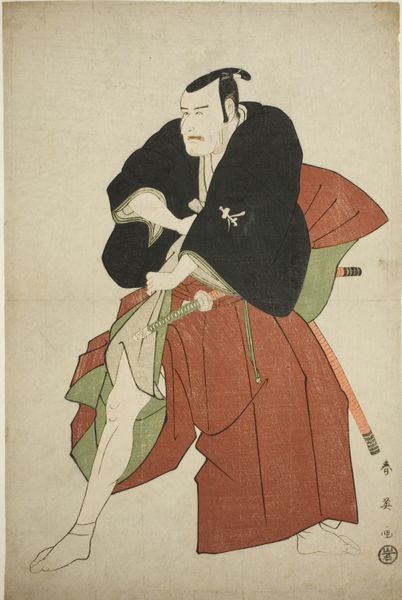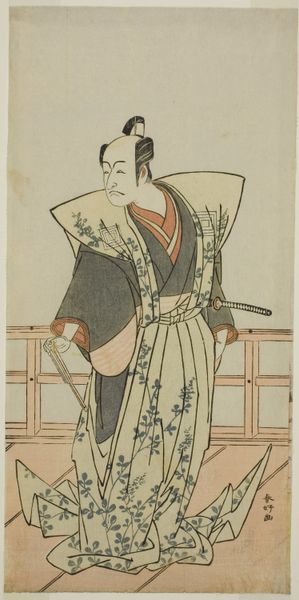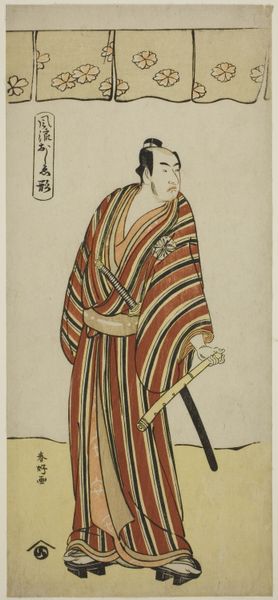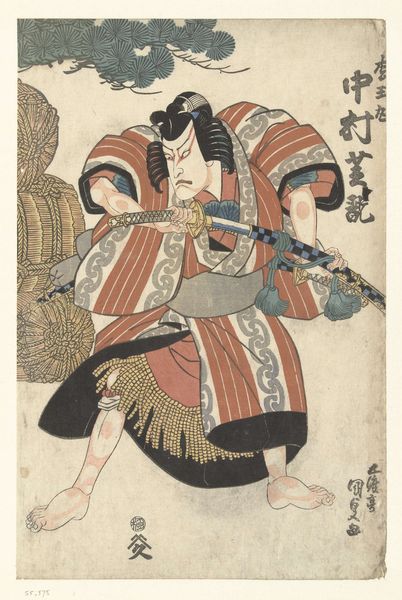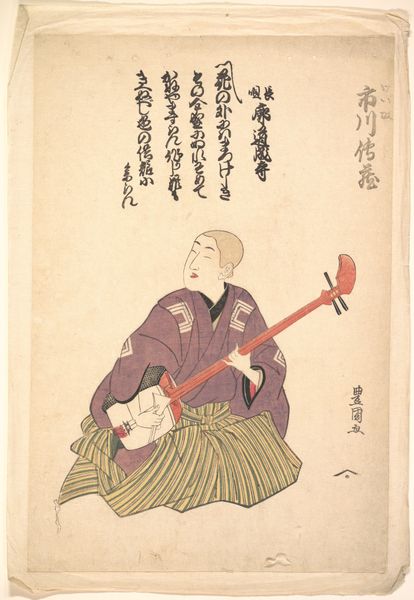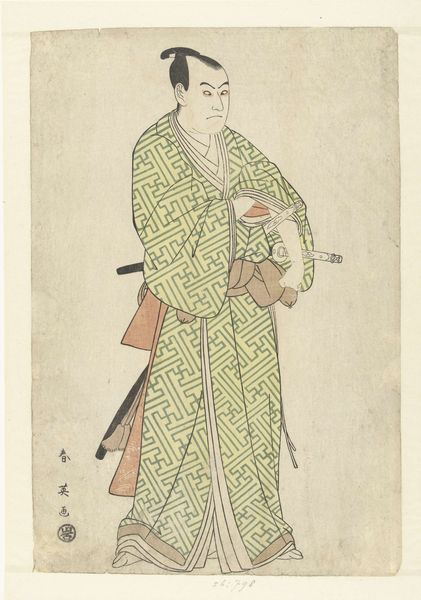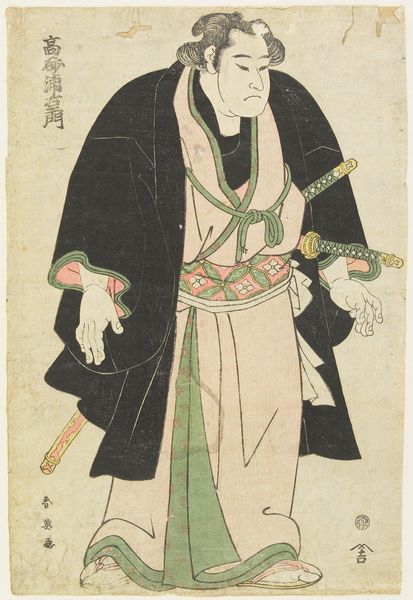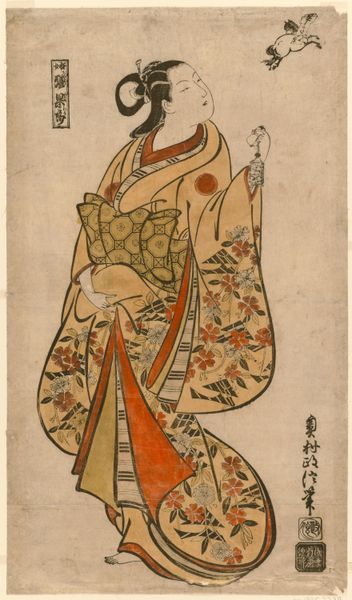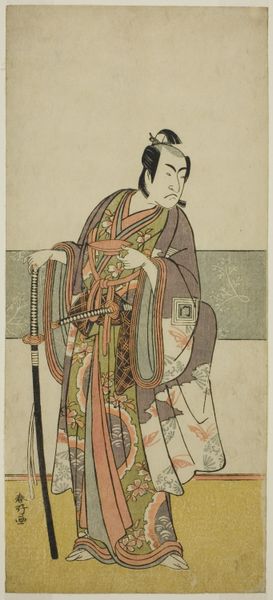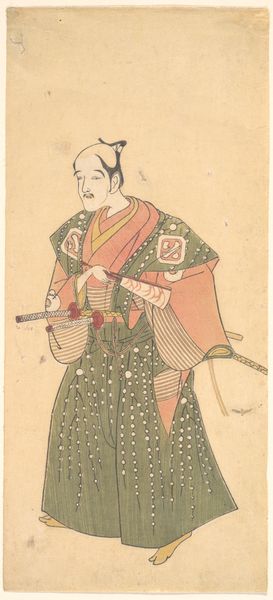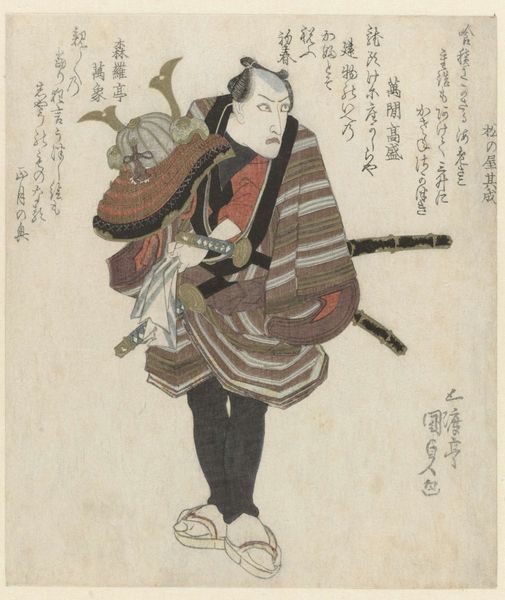
Tachibanaya: Ichikawa Yaozo III as Shimobe Hatsuhei, from the series "Portraits of Actors on Stage (Yakusha butai no sugata-e)" 1794
0:00
0:00
# print
#
caricature
#
asian-art
#
caricature
#
ukiyo-e
Dimensions: 14 3/8 × 9 3/4 in.
Copyright: Public Domain
Editor: Here we have Utagawa Toyokuni I’s print, "Tachibanaya: Ichikawa Yaozo III as Shimobe Hatsuhei," created in 1794. It's a striking image of a Kabuki actor, rendered with such clarity. The way he holds his hand intrigues me. What social narratives are at play here? Curator: Precisely! This print offers us a glimpse into the social dynamics of Edo-period Japan. Kabuki theatre, while popular, was often looked down upon by the ruling classes, wasn’t it? Think of this actor, Yaozo III, embodying Shimobe Hatsuhei. Hatsuhei was likely a character navigating social hierarchies, perhaps challenging or satirizing them. The way Toyokuni I portrays him, even with the hint of caricature, suggests a commentary on power. Who was the target audience, and how might they have interpreted this image in relation to their own social standing? Editor: That makes sense. The caricature feels like a form of rebellion against rigid social structures. Do you think this print challenges our modern understanding of celebrity and its impact? Curator: Absolutely. Consider the role of actors as social commentators then, and compare it to how celebrity functions today. To what extent were Kabuki actors like Yaozo able to influence or subvert societal norms through their performances? Ukiyo-e prints, like this one, made these performances accessible to a wider audience. This form democratized imagery, spreading these subversive representations beyond the theater. Think about how contemporary art engages with similar strategies of accessibility and social critique. Editor: So, in a way, it's a record of social tensions, expertly packaged and distributed! I never thought of Ukiyo-e prints having that level of social commentary. Curator: Indeed! The surface beauty often belies the deep engagement with contemporary social and political issues, always mediated through the lens of the artist and the performative nature of identity. Always dig beneath the surface, and question those beautiful lines and colors.
Comments
No comments
Be the first to comment and join the conversation on the ultimate creative platform.



